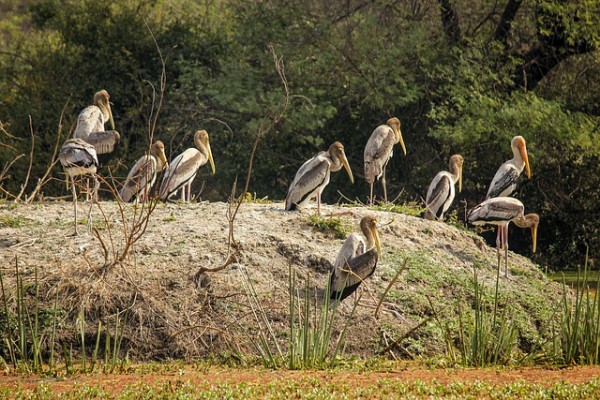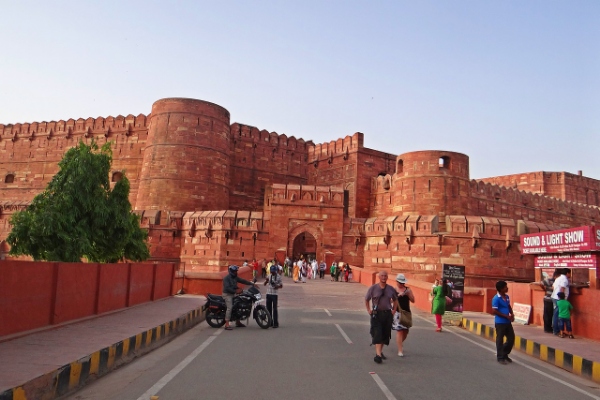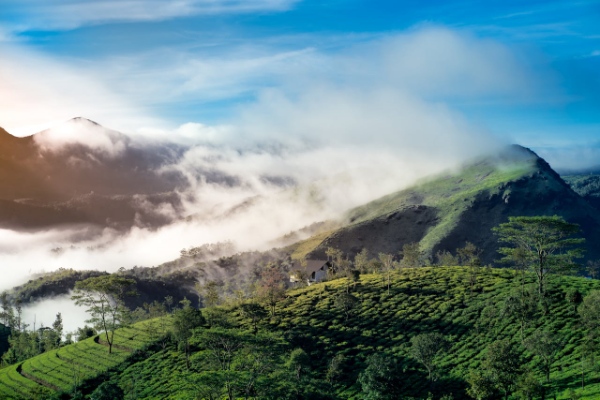- The Indian subcontinent’s cultural, religious, and social fabric are intricately entwined with the history of Hindu cuisine. An outline of its development and importance is provided below:
Ancient Period (c. 3000–600 BCE) (Hindu Food Names)
- The civilization of the Indus Valley (c. 3000–1500 BCE): The Indus Valley Civilization is the source of the first evidence of eating customs. Fruits, peas, lentils, wheat, and barley were all farmed. They tamed buffalo, poultry, and cattle among other animals. There is evidence of the use of grinding stones to make flour and of cooking methods such as boiling and roasting.
- The Vedic Era ( 1500–600 BCE): The ancient Hindu texts known as the Vedas had an impact on eating customs. Grain-based foods, fruits, vegetables, dairy products, and meat—including beef, though the type of meat varied depending on the area and historical period—made up the majority of the diet. Food had a special ceremonial significance since deities were offered offerings (Yajnas).
Classical Period (c. 600 BCE–1200 CE) (Hindu Food Names)
-
- The Maurya and Mahajanapadas periods (c. 600–200 BCE) During this time, Buddhism and Jainism emerged and had an impact on eating habits. They promoted vegetarianism and non-violence in particular. During the Mauryan era, there was a structured society with a variety of eating customs. An ancient Indian treatise called the Arthashastra sheds light on the range of foods and drinks enjoyed, including the usage of spices.
- Period of Guptas (around 320–550 CE): Known as a “golden age,” this time saw continued improvement in cooking techniques. The Brahmin community got more and more vegetarian. Spices including cardamom, turmeric, cinnamon, and black pepper were frequently used. Ayurvedic scriptures stressed the idea of balanced meals, which include six tastes: sweet, sour, salty, bitter, pungent, and astringent.
Medieval Period (c. 1200–1757 CE) (Hindu Food Names)
1. Sultanate and Mughal Periods (c. 1206–1757 CE):The entrance of Muslim rulers brought new culinary techniques and ingredients, such as the usage of dry fruits, nuts, and aromatic spices, to the Sultanate and Mughal periods (1206–1757 CE). Mughal cuisine rose to prominence as a rich fusion of Indian, Turkish, and Persian flavours. They created dishes like kebabs, biryani, and many kinds of bread (roti, naan).
Colonial Period (c. 1757–1947 CE)
British Influence: New products and cooking methods, like potatoes, tomatoes, and chilli peppers, were brought about by the British colonisation. In spite of this, regional cuisines flourished and customs around eating remained strong.
Modern Period (Post-1947)
-
- After Independence: Following independence, there were notable shifts in India’s gastronomic scene, with a greater fusion of international cuisines. Under the influence of figures like Mahatma Gandhi, vegetarianism kept growing. There are a lot of vegetarians in India these days.
- Globalization: Indian food has become more well-known throughout the world, with dishes like masala chai, tandoori chicken, and curry gaining popularity. Indian modern cuisine is still developing, striking a balance between classic tastes and cutting-edge techniques.
Religious and Cultural Significance (Hindu Food Names)
-
- Festivals and Rituals: Hindu holidays and traditions revolve around food. Prasad or offerings to the gods, is a fundamental component of religious rituals.
- Ayurvedic : The emphasis of traditional Indian medicine is on food to maintain mental and physical equilibrium. Foods are grouped according to how they affect the body and mind, encouraging overall health.
- Non-violence/ ahinsa: Vegetarianism has become popular in Hinduism because of the philosophy’s emphasis on nonviolence and its inspirations from Buddhism and Jainism.
Regional Differences: ( Hindu Food Names)
India’s varied topography and cultural customs have produced a wide variety of regional cuisines, each with its own special ingredients and preparation techniques. The history of Hindu cuisine is a complex tapestry made up of many influences and changing customs that represent the subcontinent’s overall cultural and religious ethos.
-
- West Indian cuisine: uses spices, peanuts, and coconut in a range of vegetarian and non-vegetarian meals.The states of Maharashtra, Gujarat, Goa, and Rajasthan together make up West India, which is renowned for its varied and abundant food customs. Here are five well-known foods from this area: 1. Often called the “Indian burger, Vada Pav (Maharashtra): is a dish that consists of a spicy potato mixture between a bread roll and is eaten with chutneys and fried green chilli.
- Gujarat/Dhokla: Dhokla is a famous vegetarian dish made with fermented rice and chickpeas. It’s steamed and comes with a side of green chutney, making it a nutritious and light snack.
- Goan Fish Curry (Goa): Served with rice, this dish is a mainstay of Goan cooking and consists of fish cooked in a tart and spicy coconut milk curry.
- Rajasthan’s Dal Baati Churma: Three ingredients make up this classic Rajasthani dish: baati (hard wheat rolls), chana (sweetened, mashed baati), and dal (lentils). This filling dish is renowned for its complex flavours and textures.
- Pav Bhaji (Maharashtra): Spice-cooked, aromatic vegetable mash eaten with buttered bread rolls. Originally from Mumbai, this street cuisine has gained popularity all over the nation. 2.South Indian cuisine: is well-known for its use of coconut, spices, and rice-based meals. Vegetarian cuisine is given special attention.These are five common vegetarian dishes from South India: 1. Dosa: A thin, crispy pancake cooked with black gramme (urad dal) and fermented rice. It is frequently served with coconut chutney and sambar, a hot lentil soup. 2. Idli: Traditionally eaten with sambar and chutneys, these soft, fluffy rice cakes are created from fermented rice and urad dal batter. 3. Sambar: A robust, hot lentil soup cooked with vegetables, tamarind, and a special blend of spices. It goes well with rice, idli, or dosa. 4.Rasam: Tamarind juice, tomatoes, and a variety of spices are combined to make this zesty and hot soup. Usually, rice is served with it. 5. Vada: A savoury, deep-fried snack, typically in the shape of a doughnut, made with urad dal batter. It is usually served with chutney and sambar and has a crispy surface and soft within.These meals are mainstays of South Indian cooking, and people love them for their distinct tastes and nourishing content. 3. East Indian cuisine: is well-known for its usage of mustard oil, fish and sweets.Eastern India’s distinct topography and cultural past have shaped its rich and varied cuisine. These are five well-liked Eastern Indian dishes: 1. Iromba Manipur is the origin : This traditional Manipuri cuisine is created with green chilies and boiled and mashed veggies, especially fermented fish. It has a robust, spicy flavour and is usually topped with herbs like cilantro. 2. Jhol Machher: West Bengal is the origin. This is a classic Bengali fish curry that is cooked in a light broth with potatoes, tomatoes, turmeric, cumin, and coriander. Typically, it is made using freshwater fish like rohu or hilsa. 3. Momos: Source: Sikkim Dumplings packed with vegetables, poultry, pig, or beef that can be steamed or fried. They frequently come with a hot dipping sauce on the side. Momos are extremely well-liked throughout the entire northeastern region and are influenced by Tibetan cuisine. 4. Chhena Poda: Source: Odisha A novel treat consisting of fresh cottage cheese (chhena), sugar, and semolina cooked till the crust turns caramelised. Cardamom is a common flavouring for it. 5. Pakhala Bhata: Source: Odisha This meal of fermented rice is sometimes served with lemon and mint, along with water and curd. It is a well-liked summertime dish that is frequently served with fish and mashed or fried veggies. 4. North Indian cuisine: The rich and varied cuisine of North India features a wide range of dishes that pay homage to the region’s culinary past. Here are the top five dishes from North India: 1. Butter chicken: is a well-known Punjabi cuisine that is a creamy curry with a hint of heat that is made with marinated chicken cooked in a tomato-based sauce and enhanced with butter and cream. 2. Chole Bhature is a well-known Punjabi and Delhii meal that consists of deep-fried bread (bhature) with spicy chickpeas (chole). It’s a popular dish to have for lunch or brunch. 3. Paneer tikka consists of marinated slices of paneer, or Indian cottage cheese, which are then expertly grilled or roasted. It’s a favourite appetiser that’s frequently served with mint chutney. 4. Rogan Josh: A tasty lamb curry with a blend of yoghurt and aromatic spices, Rogan Josh is a native of Kashmir. Because Kashmiri chilies are used, it has a deep red colour that makes it famous. 5. Dal Makhani: The rich and creamy lentil dish known as Dal Makhani, a Punjabi staple, is made from black lentils and kidney beans and is cooked gently with butter, cream, and a mixture of spices. The use of dairy items like cream and butter, which are typical of North Indian cuisine and their complex spice combinations are what make these dishes so well known.
Related Posts

Bharatpur Bird Sanctuary in India
One of India's most well-known bird sanctuaries and a UNESCO…


Places To See In Coorg Hill Station
Known by another name, Kodagu, Coorg is a well-liked hill…
